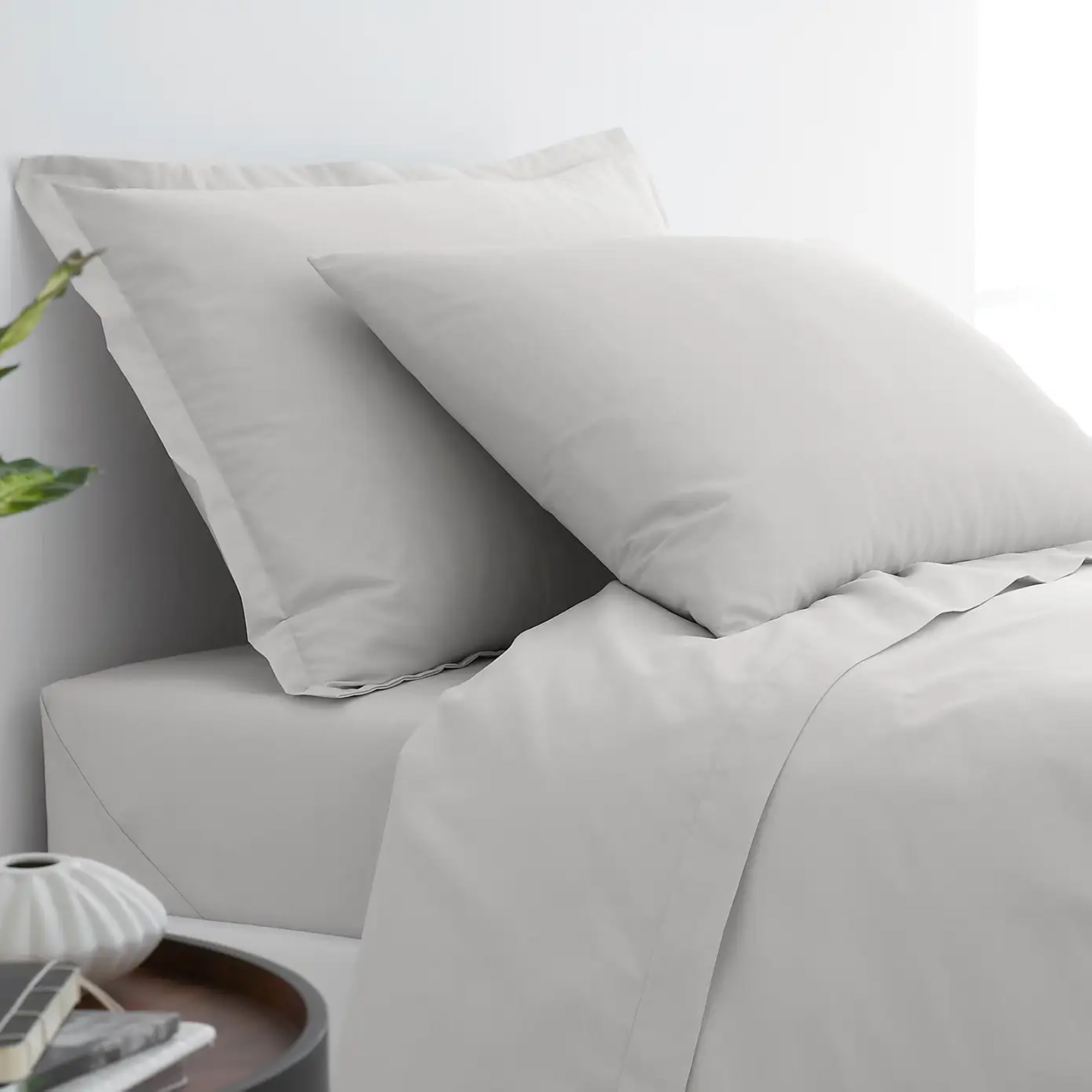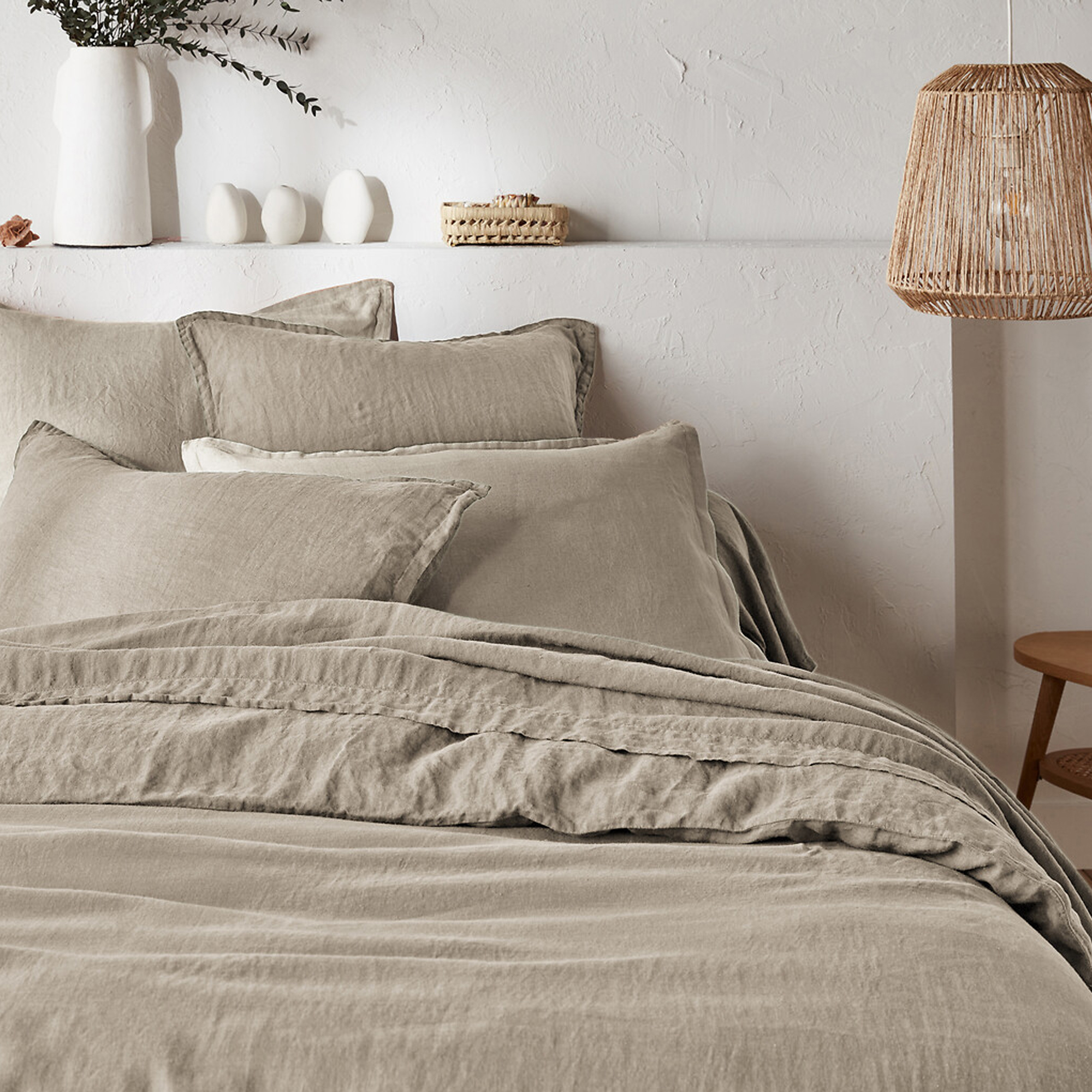This is the colour bedding that will make a small bedroom look bigger, according to experts – and the shades to avoid
'This bed linen is especially effective at making a room feel larger as it opens up the space'

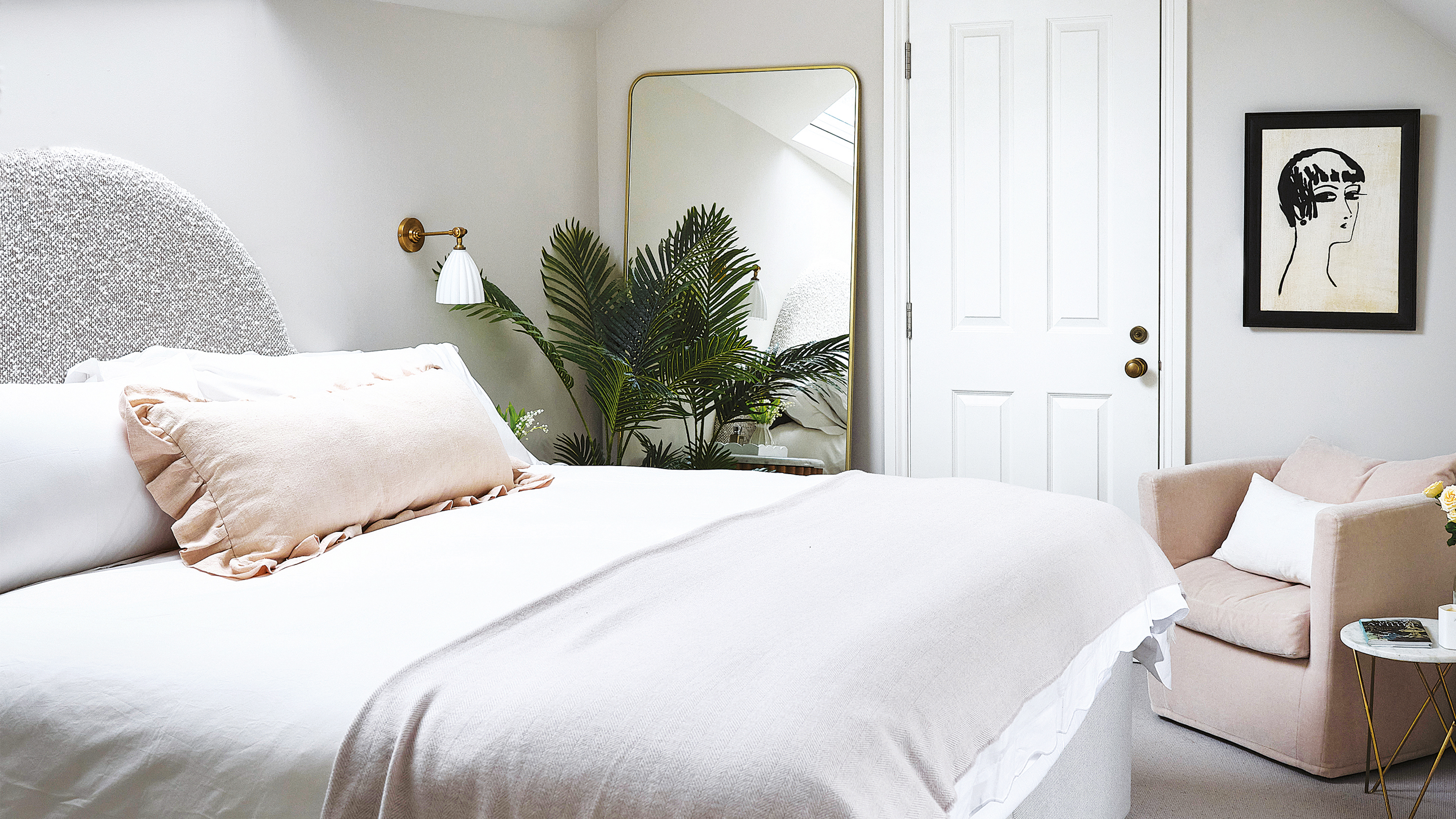
If, like me, you're blessed with a small bedroom, then you're probably keen to incorporate any and every design trick available to make it look and feel bigger.
In a small bedroom, your bed is likely to be the most impactful feature of the room, which is why choosing your bedding is especially important if your boudoir is bijou.
So what colour bedding makes a small bedroom look bigger, and what colours are you best avoiding? I asked three bedding experts for their top tips to incorporate into any small bedroom ideas.

What colour bedding makes a small bedroom look bigger?
'In a small bedroom, bed linen is arguably one of the most important elements in your room scheme as it takes up the most real estate,' says Georgia Metcalfe, founder and creative director of French Bedroom. 'Opting for light-coloured bed linen is especially effective at making a room feel larger, as it reflects light and visually opens up the space.'
'Lighter shades are your best friends here,' agrees Molly Freshwater, co-founder of Secret Linen Store. 'Think soft whites, gentle naturals, and barely-there pastels. These colours do a brilliant job of bouncing the light around.'
'Soft, light colours, such as oatmeal, sage greens, or muted neutrals, can help create the illusion of space in a smaller bedroom,' confirms Jessica Hanley, founder and CEO of Piglet in Bed. 'These tones reflect natural light and will help to visually open up the room, making the space feel brighter.'
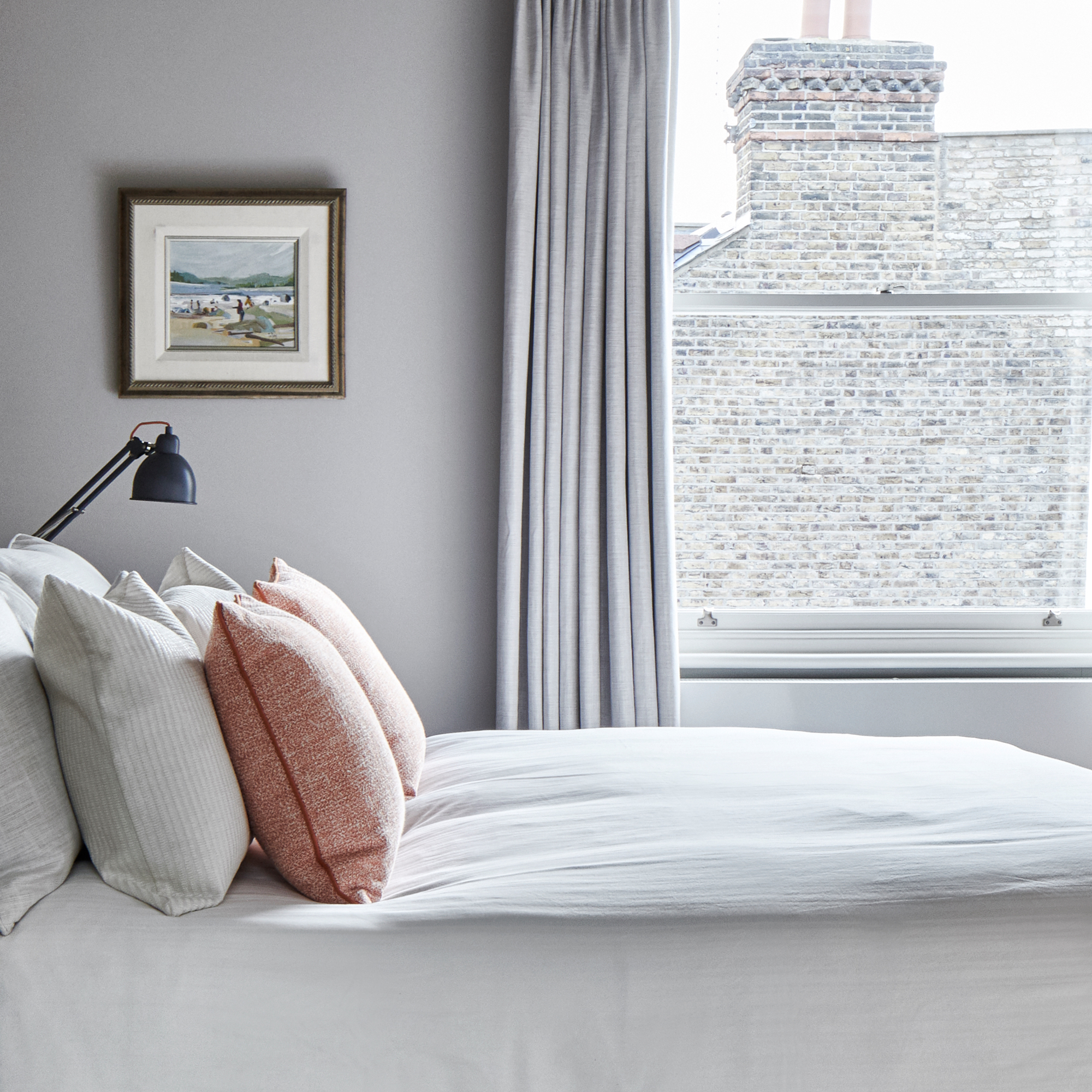
Styling tips for bedding in a small bedroom
However, making a small bedroom look bigger isn't just about choosing light-reflecting bedding colours. There are also styling tricks our experts recommend using to maximise the sense of space in a small room.
Sign up to our newsletter for style inspiration, real homes, project and garden advice and shopping know-how
'Let your bedding blend in with the room around it,' advises Molly. 'If your duvet cover is the same soft colour as your walls or curtains, everything feels more spacious and seamless.' So don't just think about colour drenching your walls and ceiling, incorporate the same shades on your bed linen too.
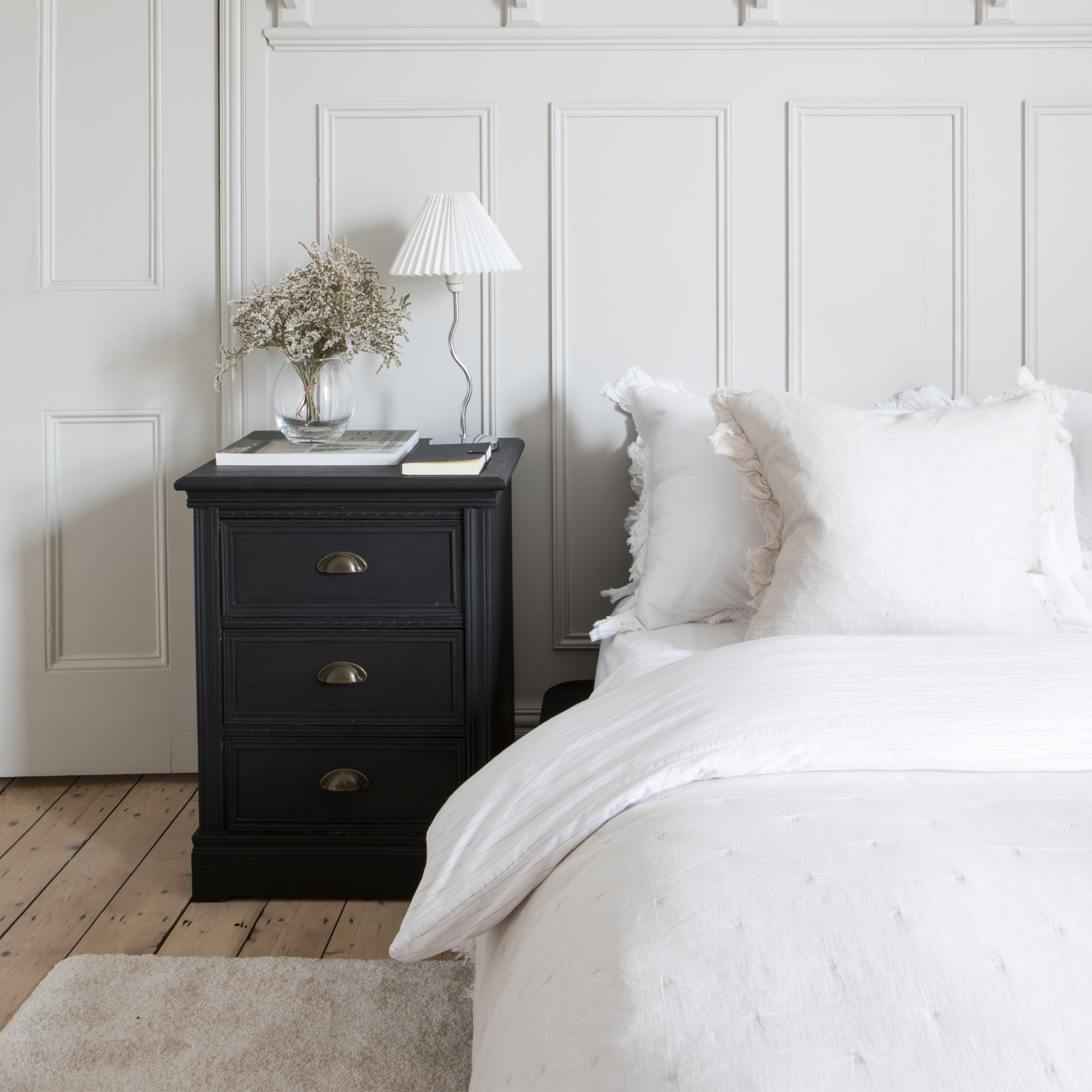
That said, this doesn't mean you need to go for the exact same shade on your walls and bed.
'I recommend layering gentle textures in a tonal colour palette,' shares Georgia. 'Calm, tonal schemes help fool the eye into perceiving more space, while a mix of textures adds depth and visual interest without overpowering the room.'
Jessica agrees that incorporating texture into your bedding can be a great way to add visual interest to a small bedroom. 'Linen’s crinkled and natural texture will give the bed a bit of depth without making the room feel heavy or crowded,' she advises.

What colour bedding should you avoid in a small bedroom?
So now we know what colour bedding makes a small bedroom look bigger, but how about what colours *not* to use in a small bedroom?
'Dark, heavy colours, such as deep navy, charcoal, or burgundy, can make a small bedroom feel more enclosed and visually compact,' says Georgia. 'While dramatic tones have their place, in a smaller setting, they tend to absorb light and reduce the sense of space.'
'Very dark or bold colours, like deep navy, charcoal or rich jewelled tones, can make a small room feel even smaller and a bit boxed in as they tend to soak up light rather than bounce it around,' agrees Jessica.
The same goes for bold patterns. If you want to make a small bedroom look bigger, you tend to be best opting for plain bedding or small ditsy prints rather than large prints and patterns, which can overwhelm a small space if not done carefully.
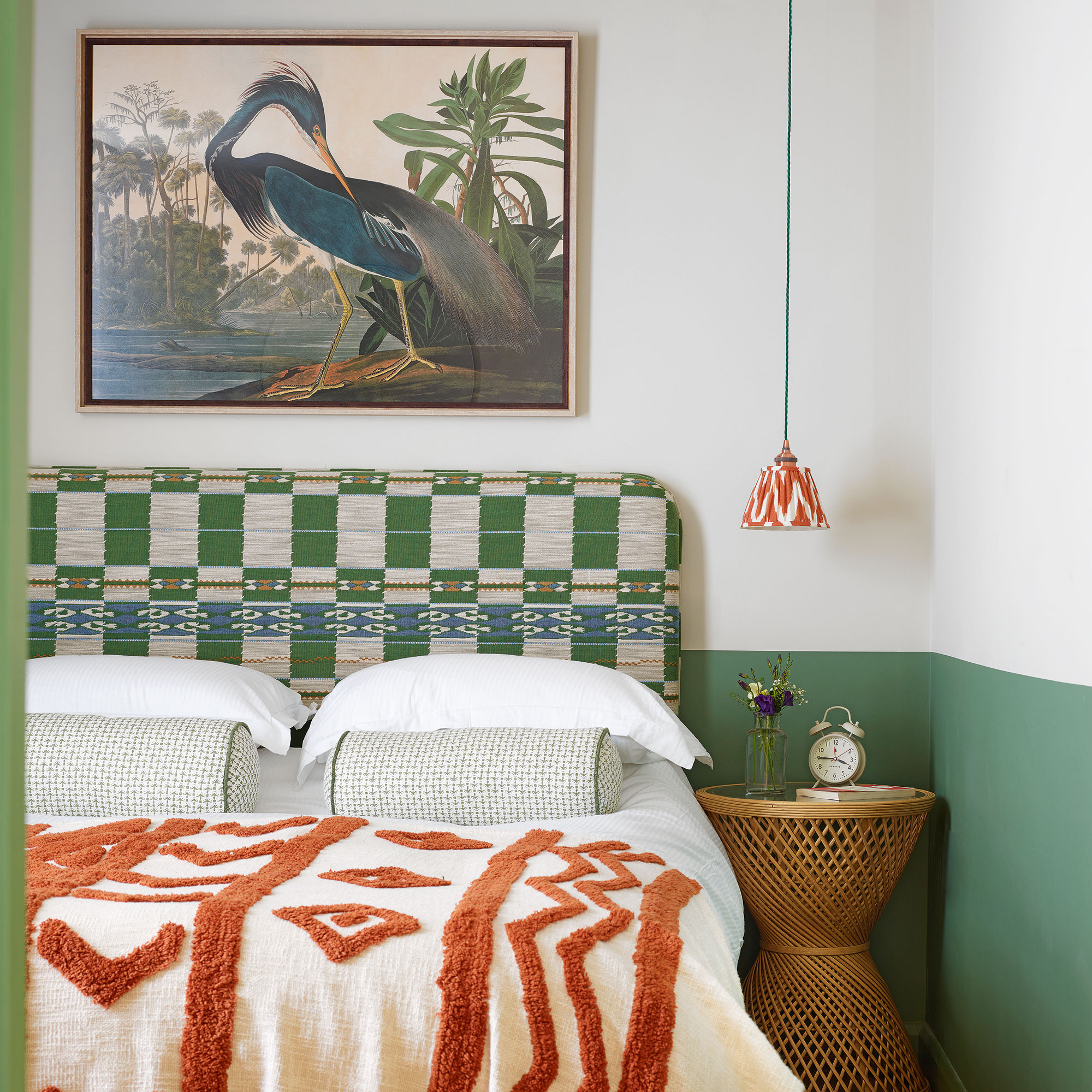
The same goes for bold patterns. If you want to make a small bedroom look bigger, you tend to be best opting for plain bedding or small ditsy prints rather than large prints and patterns, which can overwhelm a small space if not done carefully.
'That said, if you love those deeper shades, you don’t have to avoid them altogether,' says Jessica. 'Try adding them in with a pair of pillowcases or fitted sheet instead of going all-in with the fully drenched bedding set.'
'If you’re drawn to moodier hues, consider using them sparingly as accents with accessories such as cushions, throws, or a statement headboard, rather than as the dominant bedding colour,' agrees Georgia.

However, if you're just not a fan of light and neutral tones and are hankering after a deeper shade in the boudoir, Molly encourages us to be brave.
'It really depends on what sort of mood you’re going for,' says Molly. 'If you’re chasing that light, open, bigger-than-it-is feeling, then steer clear of anything too dark or bold. But, if you’re after a cocoon of calm, then celebrate the smallness and lean into it with rich, moody colours.'
'I’m a big fan of painting everything in the same tone, including walls, ceiling, and woodwork, and then layering it all up with bedding that adds to the mood. It makes even the tiniest room feel like a luxurious little hideaway. So it’s less about rules, more about a feeling.'
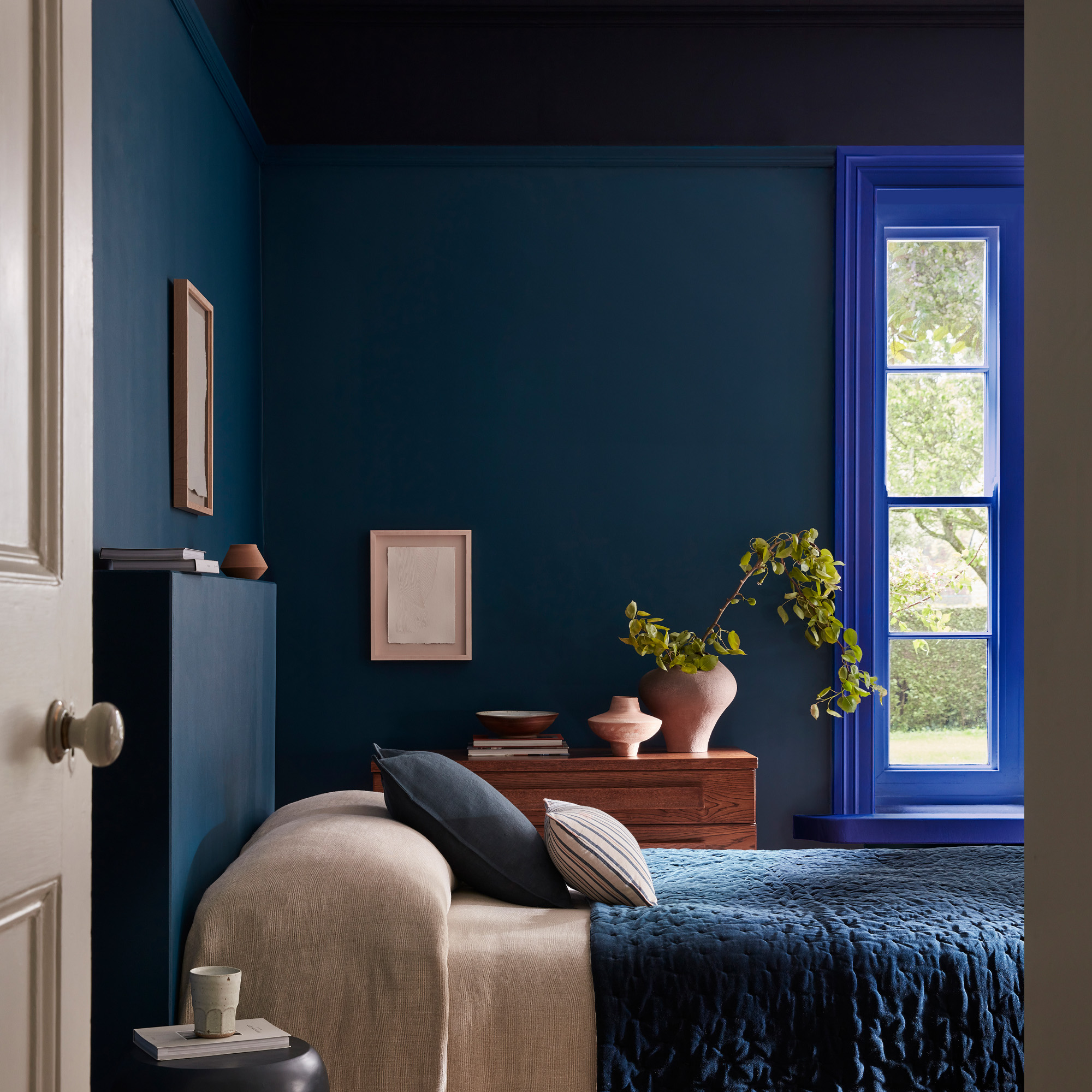
In summation, if you want to make your small bedroom feel bigger, opt for light or neutral shades that will bounce natural light around the space, and keep your bedding, walls, and furniture to tonal shades that don't jar the eye and make you focus on any one thing.
And the same goes if you want to throw out the rule book and embrace dark colours. Just make sure you stick to similar tones across your bedding, walls, and accent furniture to create a cohesive look.
Wondering where to buy bedding to achieve this look? I've rounded up three of my top recommendations below.

Amy is Ideal Home’s Sleep Editor and the Ideal Home Certified Expert on Sleep. She's spent the last four years researching and writing about what makes for the best night’s sleep during the day and testing out sleep products to find the best-in-class by night. So far she’s clocked up over 10,000 hours of pillow, duvet, and mattress testing experience.
Our go-to for all things sleep-related, she’s slept on and under bestselling products from Simba, Emma, Hypnos, Tempur, Silentnight, Panda, and many many more.
As a hot sleeper, Amy is always on the lookout for the most breathable bedding, but she also leads a wider team of testers to ensure our product testing encompasses both hot sleepers, cold sleepers, front sleepers, back sleepers, side sleepers, and everything in-between.
